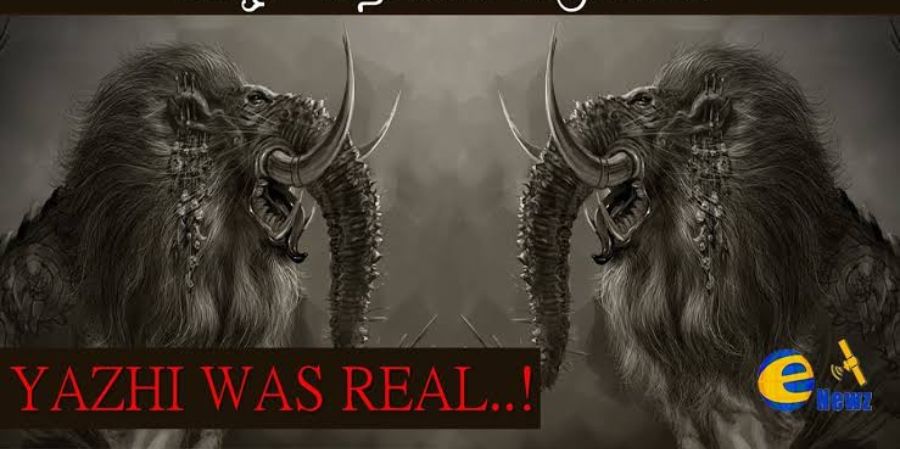

Yali, also known as Vyala, is a Hindu legendary beast having the head and body of a lion, the trunk and tusks of an elephant, and occasionally horse traits.
The monster can be found in many South Indian temples, often carved into pillars.There are numerous variants of the creature that have the appendages of different beasts. It has been characterised as a leogryph (part-lion, part-griffin) with some bird-like traits, and the trunk as a proboscis.
Yazhi is the term for this. There are three kinds of yazhi: singam, magara (goat), and yaanai (elephant). These animals are utilised in battles and to guard temples from theft.
Iconography
Although yalis have been described and referenced since antiquity, they first emerged in South Indian sculpture in the 16th century. Yalis were thought to be stronger than lions, tigers, and elephants. The yali has a cat-like sleek body, but the head of a lion with elephant tusks (gaja) and a serpent tail in its iconography. They've been shown standing on the back of a makara, another mythical creature thought to be Budha's (Mercury's) vahana. Some of the images look to be three-dimensional yalis representations. The graceful legendary lion is considered to safeguard and guard the temples and passageways, and pictures or images have been unearthed on the temple entry walls.
Symbolism
The yali is regarded to be a protector of mankind, both physically and spiritually. It is seen as a brave beast who rules over the animal realm. It is also regarded to be a symbolic representation of man's struggle against nature's fundamental components.
Yali figures are thought to operate as guards and protectors, protecting a temple from harm. The surul-yali is a benign variant of the yali that is generally portrayed flanked tiny stairways affixed to temple plinths with waterfalls emerging from its open mouth. Yalis were also considered divine vehicles for deities, and were employed to represent heroism and natural elements that might be tamed and controlled by incorporating them into building and sculpture.
The Tiger Cave at Saluvankuppam, the Airavateshvara temple at Dasarum, the Minakshi-Sundareshvara temple at Madurai, the Virupaksha temple at Hampi, Karnataka, the Kailasanatha Temple at Ellora, and the Sun Temple at Konark are all home to Yali figures.
Yazhis' Functions
Yazhi sculptures are placed on both sides of the entrance path of temples, shrines, and temple carriages (chariots) to ward off evil. They are frequently referred to as the temple's and its lands' defenders. The image above depicts yazhis in various forms being utilised as vahanams or procession rides for Vishnu's utsava murthi (metal statues) in Kanchipuram's Ulagalantha perumal temple. A yazhi was the mount or vehicle (vahanam) of the Budh (the planet Mercury), which is apparently genderless.
